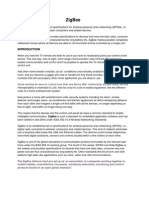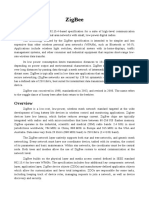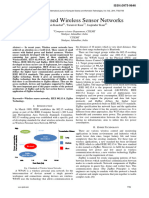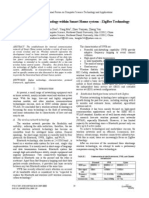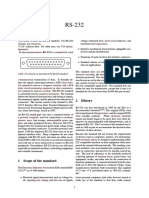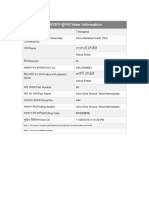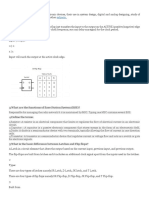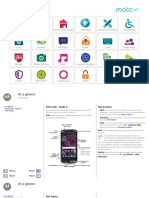0% found this document useful (0 votes)
294 views9 pagesZigBee: Wireless Networking Standard
ZigBee is a wireless networking standard used for low-power digital radio connections between devices like sensors, controls, and entertainment systems. It allows for many devices to communicate within a single wireless network using a mesh network topology without needing direct line-of-sight. ZigBee networks employ low data rates and long battery life to enable low-cost networking between devices within close proximity of each other.
Uploaded by
rahulCopyright
© © All Rights Reserved
We take content rights seriously. If you suspect this is your content, claim it here.
Available Formats
Download as DOC, PDF, TXT or read online on Scribd
0% found this document useful (0 votes)
294 views9 pagesZigBee: Wireless Networking Standard
ZigBee is a wireless networking standard used for low-power digital radio connections between devices like sensors, controls, and entertainment systems. It allows for many devices to communicate within a single wireless network using a mesh network topology without needing direct line-of-sight. ZigBee networks employ low data rates and long battery life to enable low-cost networking between devices within close proximity of each other.
Uploaded by
rahulCopyright
© © All Rights Reserved
We take content rights seriously. If you suspect this is your content, claim it here.
Available Formats
Download as DOC, PDF, TXT or read online on Scribd
/ 9
